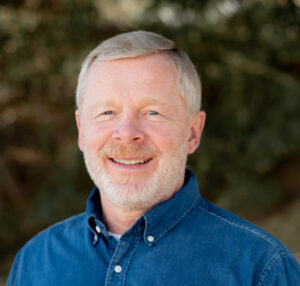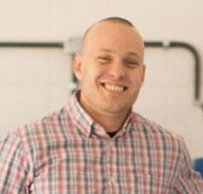Access to clean, affordable water is a vital precondition for public health and a thriving economy, and its absence is a serious challenge for many communities and countries around the world. Healing Waters International is one of the many organizations taking on the challenge of bringing affordable, sustainable potable water infrastructure to underdeveloped communities across the globe. In this interview, Healing Waters CEO Rob Anthony and Director of Field Operations and Lead Engineer Walter Nonemaker tell Municipal Water Leader about how they are carrying out the organization’s mission.
Municipal Water Leader: Please tell us about your backgrounds and how you came to be in your current positions.
Rob Anthony: After a successful exit from an engineering and manufacturing company that I started coming out of college, I was a pastor at a church in Oregon. One of the things we were involved in was international mission work, through which we helped communities develop different aspects of their community life. Through my travels, I became cognizant of the magnitude of the global water crisis for the first time in my life. We kept stumbling on this issue, which was holding communities back in terms of both health and economic development. We couldn’t do the work we’d planned to do because of that issue.
At the same time, an Oregon technology startup called Puralytics was developing innovative technologies for purifying water that used light and nanotechnology and had low energy needs. It held a lot of promise for helping address water purification problems in the developing world, especially in places that are remote, underserved, and underresourced. I invested in the company, joined its board, and spent about 2½ years traveling throughout Africa, Central America, and Asia, running trials and looking for ways to apply the technology at a large scale. One issue we ran into was that providing safe water that meets drinking standards at an extremely low cost is difficult. I also realized that there was a need for more than just technology—there was a need to bring holistic and economically sustainable solutions that build local capacity, knowledge, and community engagement. That’s when I came across Healing Waters International through some relationships that I had. I was invited to come on board here about 5 years ago.
Walter Nonemaker: I got excited about international development, community development, and mission work in high school. I started learning Spanish and going on discovery trips to Spanish-speaking countries. I knew that I wanted to do something with my life that would make the world a better place. I decided to study civil and environmental engineering in college, and water emerged as my primary interest. I continued doing international internships, studying abroad, going on discovery trips, and improving my Spanish.
When I finished college, I started searching for jobs in this sector and got hired to work in Guatemala as field staff for Healing Waters International. I started out as the Guatemala water treatment technician, and over the years, I was able to grow within the organization to become the Guatemala country director. I eventually relocated back to the United States after living in Guatemala for 9 years and became the director of field operations for Healing Waters International. More recently, my role has expanded to director of field operations and lead engineer. I oversee most of the operational and programmatic components of our work.
Municipal Water Leader: Tell us about Healing Waters International as an organization and its history and mission.
Rob Anthony: We started in 2002 after a husband-and-wife team went on a mission trip to Santo Domingo, Dominican Republic. They put together a water purification kiosk to sell water in the community at a price that was much more affordable than anything the people in the city had before. They spawned a cottage industry in the Dominican Republic, and Healing Waters International was formed as a nonprofit to lead it. Since then, 90 or so small water enterprises have been founded in Santo Domingo and in the countryside of the Dominican Republic; they continue to operate to this day. From there, the organization extended into the two southernmost states of Mexico, Oaxaca and Chiapas, and into Guatemala and Haiti. Those are the places where we have bases of operations, but we are also active throughout Central America and Africa through partnerships that we’ve formed over the years. Our projects are active in about 480 communities, and we currently serve over 350,000 people in 16 countries.
Municipal Water Leader: Would you give us a basic sense of the sorts of projects that Healing Waters International carries out and the infrastructure that it builds?
Walter Nonemaker: There are a lot of big nonprofit and governmental efforts to bring water access infrastructure and pipelines into communities, but they often fail to address the problem of water contamination. Without good design for treatment or remediation, a water source cannot be sustainable in a low-resource context. We are trying to address the issue of water safety and quality in challenging contexts in a way that’s reliable and sustainable over the long term.
We begin by establishing a connection to a water source like a river, pond, or lake or by bringing in a pipeline from farther away. We do a lot of design and problem-solving to build solar-powered pumping and water lines to bring water to communities that currently do not have sustainable supplies. In some cases, we drill wells.
Once we test the water, we design a water treatment solution that is appropriate to the water quality and to the size of the community. We then install the water access and treatment solutions and establish a leadership team in the community, which means empowering some people to be technicians who can operate and do maintenance on the system. We train the community; provide it the materials, logbooks, and quality-control tools it needs; and provide ongoing tech support, training, and monitoring and evaluation services for at least 5 years.
Municipal Water Leader: How does the infrastructure that Healing Waters International builds in these locations differ from the drinking water infrastructure that we’d be familiar with in the United States?
Walter Nonemaker: The technologies we use and the approach that we take to water treatment, apart from the systems being at a smaller scale, are not too different from the cutting-edge technology that’s used in the United States. In addition to being at a smaller scale, there’s a lot of adaptation that goes into making these things work in environments with fewer resources and lower educational levels. We design the systems so that every component is built out in a room where things are mounted along the walls and are accessible and visible. People can see and get their hands on every element of the treatment train, including the feed pumps, retreatments, activated carbon membrane technology, booster pumps, posttreatment, and ultraviolet chlorination elements. That way, it is apparent if a piece is faulty and needs replacing.
Municipal Water Leader: Please tell us about one of your projects.
Walter Nonemaker: About 2 years ago, we implemented a community water project in a coastal fishing village in Haiti called Anse à Boeuf, which has no land access and no vehicle access. The community is on a remote stretch of beach, and the only way in and out is by boat. The residents are totally reliant on the sea and on boats that deliver supplies like bottled drinking water. The community was surviving by fishing and selling the catch to the boats, and it was spending over half the gross income it obtained by fishing to buy bottled water. The only other water resource the community had was a shallow, hand-dug well close to the beach with highly brackish water that had close to 10,000 parts per million of total dissolved solids. People were resorting to drinking that or mixing it with bottled water, because they couldn’t afford enough bottled water.
Healing Waters International was able to adapt that same groundwater supply by implementing a solar-powered reverse osmosis water system. Now for about $2 per family per month, everyone is able to drink safe water with an appropriate level of salts and minerals. They have not only been able to improve their health and recoup half their gross incomes, which they previously had to spend on bottled water, they’ve also been able to save up enough money through the water fees collected by the community to also build a public bathroom. This is planting seeds that will cascade into other forms of community development.
Rob Anthony is the CEO of Healing Waters International. He can be reached at ranthony@healingwaters.org.

Walter Nonemaker is the director of field operations and lead engineer for Healing Waters International. He can be reached at wnonemaker@healingwaters.org.

